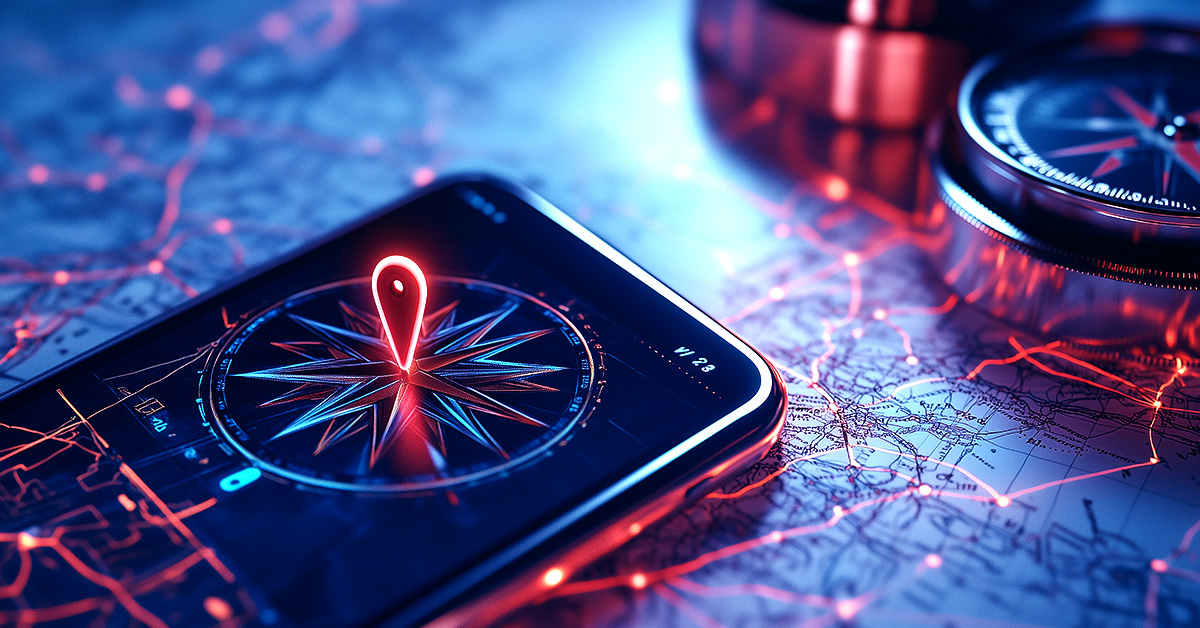- Managed Infrastructure and Cloud Services
- 5G


Emma Mak • Staff Writer
Educational institutions have an unprecedented opportunity to revolutionize how they deliver knowledge, collaborate, and manage campus operations. From virtual reality (VR) and augmented reality (AR) to real-time collaboration and comprehensive campus coverage, 5G is set to transform the educational experience.
The Current Educational Landscape
Traditional educational systems face issues such as poor connectivity, limited access to resources, and the lack of interactive learning tools — all of which have hindered possibilities for the educational experience. The growing reliance on digital learning platforms has highlighted the urgent need for a robust and reliable network — one that 5G is poised to provide.
The Promise of 5G
Enhanced Learning Experiences
Imagine a classroom where students can engage with virtual and augmented reality (VR/AR) content seamlessly. With 5G, students could take a virtual tour of ancient Rome, dissect a frog in a virtual 3D environment, or even participate in immersive historical reenactments — all in real-time and high definition. VR and AR can make learning more interactive and engaging, providing immersive experiences. With 5G’s ultra-low latency and high-speed data transfer, these technologies can be seamlessly integrated into the curriculum.
Real-Time Collaboration
Gone are the days when group projects meant coordinating schedules to meet in person. 5G enables real-time collaboration across the globe. Students can work on shared documents, participate in video conferences, and use collaborative tools without any lag. This opens up opportunities for international partnerships and cross-cultural learning experiences, making education more inclusive and diverse.
Access to Vast Online Resources
One of 5G’s most significant advantages is its ability to provide quick and reliable access to vast online resources. Whether they’re accessing research papers, streaming educational videos, or downloading large datasets, students can do it all without any hiccups.
Campus Coverage
A university campus can span several buildings and acres of land, making consistent network coverage a challenge with older technologies. 5G can provide robust, uninterrupted connectivity across the entire campus, ensuring that students and faculty can stay connected whether they’re in a lecture hall, the library, or even the campus café. This reliable coverage can support various applications, from online learning platforms to campus security systems.
Overcoming Obstacles
Cost and Infrastructure
One of the main concerns about implementing 5G in educational institutions is the cost. Smaller or underfunded schools may find it challenging to bear the initial investment. However, it’s essential to view this as a long-term investment in the future of education. Public-private partnerships, such as those between educational institutions and telecom companies like T-Mobile, can help alleviate these financial burdens.
Privacy and Cybersecurity
With great connectivity comes great responsibility. The implementation of 5G must be accompanied by robust cybersecurity measures to protect the privacy and data security of students and faculty. Educational institutions should invest in advanced security protocols and continuously update their systems to fend off potential threats.
The Non-Negotiability of 5G
In the global race for innovation and competitiveness, education cannot afford to lag. The adoption of 5G is essential for preparing students for the future workforce. Advanced digital skills, real-time problem-solving abilities, and global collaboration have become critical.
Dr. Michelle Weise, author of “Long Life Learning,” makes the point that “No matter our current station, we will all become working learners, always flexing between working and learning, or juggling both at the same time — looping continuously in and out of learning and work and navigating more job transitions than we ever dreamed possible.” Advanced technologies such as 5G that enhance learning opportunities will likely play a pivotal role in facilitating continuous skill development for the modern workforce.
Partner with Compucom and T-Mobile for Business
The potential of 5G to revolutionize higher education is immense. From enhancing learning experiences with VR/AR to enabling real-time collaboration and providing access to vast online resources, 5G is set to redefine the educational landscape. While there are challenges to overcome, the long-term benefits far outweigh the initial hurdles. It’s time for educational institutions, policymakers, and technology providers to join forces and make the future of learning a reality.
Take proactive steps now. Integrate 5G into your educational framework and prepare your students for a future that demands innovation and adaptability with Compucom and T-Mobile for Business.
RecenT

Opportunity in Uncertainty: Turning 6 Top IT Challenges into Strategic Advantages

Navigating Uncertainty: Mitigate Risk and Unlock Opportunity with Strategic IT Sourcing

Future-Ready IT: Strategies to Optimize, Adapt, and Lead Through Uncertainty

Reimagining IT with the FLO Framework: Inside Compucom’s Geordi Center for Interactive Managed Services and Digital Workplace Solutions

Opportunity in Uncertainty: Optimize Your Remote, Hybrid, or In-Office Setup

9 Ways Strategic IT Staffing Empowers Organizations
TOPICS
Revolutionizing Learning with 5G: A New Era for Education
- Managed Infrastructure and Cloud Services
- 5G

Emma Mak • Staff Writer
Educational institutions have an unprecedented opportunity to revolutionize how they deliver knowledge, collaborate, and manage campus operations. From virtual reality (VR) and augmented reality (AR) to real-time collaboration and comprehensive campus coverage, 5G is set to transform the educational experience.
The Current Educational Landscape
Traditional educational systems face issues such as poor connectivity, limited access to resources, and the lack of interactive learning tools — all of which have hindered possibilities for the educational experience. The growing reliance on digital learning platforms has highlighted the urgent need for a robust and reliable network — one that 5G is poised to provide.
The Promise of 5G
Enhanced Learning Experiences
Imagine a classroom where students can engage with virtual and augmented reality (VR/AR) content seamlessly. With 5G, students could take a virtual tour of ancient Rome, dissect a frog in a virtual 3D environment, or even participate in immersive historical reenactments — all in real-time and high definition. VR and AR can make learning more interactive and engaging, providing immersive experiences. With 5G’s ultra-low latency and high-speed data transfer, these technologies can be seamlessly integrated into the curriculum.
Real-Time Collaboration
Gone are the days when group projects meant coordinating schedules to meet in person. 5G enables real-time collaboration across the globe. Students can work on shared documents, participate in video conferences, and use collaborative tools without any lag. This opens up opportunities for international partnerships and cross-cultural learning experiences, making education more inclusive and diverse.
Access to Vast Online Resources
One of 5G’s most significant advantages is its ability to provide quick and reliable access to vast online resources. Whether they’re accessing research papers, streaming educational videos, or downloading large datasets, students can do it all without any hiccups.
Campus Coverage
A university campus can span several buildings and acres of land, making consistent network coverage a challenge with older technologies. 5G can provide robust, uninterrupted connectivity across the entire campus, ensuring that students and faculty can stay connected whether they’re in a lecture hall, the library, or even the campus café. This reliable coverage can support various applications, from online learning platforms to campus security systems.
Overcoming Obstacles
Cost and Infrastructure
One of the main concerns about implementing 5G in educational institutions is the cost. Smaller or underfunded schools may find it challenging to bear the initial investment. However, it’s essential to view this as a long-term investment in the future of education. Public-private partnerships, such as those between educational institutions and telecom companies like T-Mobile, can help alleviate these financial burdens.
Privacy and Cybersecurity
With great connectivity comes great responsibility. The implementation of 5G must be accompanied by robust cybersecurity measures to protect the privacy and data security of students and faculty. Educational institutions should invest in advanced security protocols and continuously update their systems to fend off potential threats.
The Non-Negotiability of 5G
In the global race for innovation and competitiveness, education cannot afford to lag. The adoption of 5G is essential for preparing students for the future workforce. Advanced digital skills, real-time problem-solving abilities, and global collaboration have become critical.
Dr. Michelle Weise, author of “Long Life Learning,” makes the point that “No matter our current station, we will all become working learners, always flexing between working and learning, or juggling both at the same time — looping continuously in and out of learning and work and navigating more job transitions than we ever dreamed possible.” Advanced technologies such as 5G that enhance learning opportunities will likely play a pivotal role in facilitating continuous skill development for the modern workforce.
Partner with Compucom and T-Mobile for Business
The potential of 5G to revolutionize higher education is immense. From enhancing learning experiences with VR/AR to enabling real-time collaboration and providing access to vast online resources, 5G is set to redefine the educational landscape. While there are challenges to overcome, the long-term benefits far outweigh the initial hurdles. It’s time for educational institutions, policymakers, and technology providers to join forces and make the future of learning a reality.
Take proactive steps now. Integrate 5G into your educational framework and prepare your students for a future that demands innovation and adaptability with Compucom and T-Mobile for Business.
Recent Blogs

Opportunity in Uncertainty: Turning 6 Top IT Challenges into Strategic Advantages

Navigating Uncertainty: Mitigate Risk and Unlock Opportunity with Strategic IT Sourcing

Future-Ready IT: Strategies to Optimize, Adapt, and Lead Through Uncertainty

Reimagining IT with the FLO Framework: Inside Compucom’s Geordi Center for Interactive Managed Services and Digital Workplace Solutions

Opportunity in Uncertainty: Optimize Your Remote, Hybrid, or In-Office Setup




